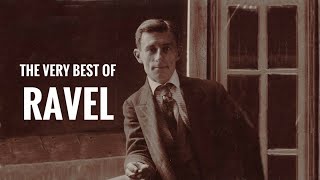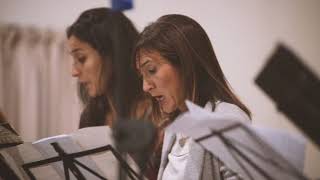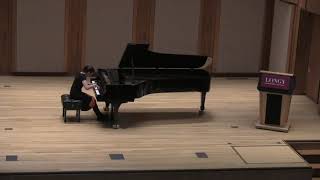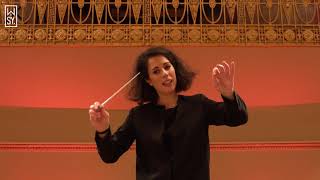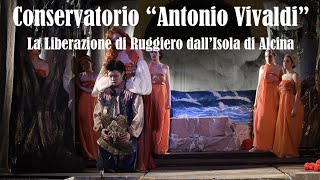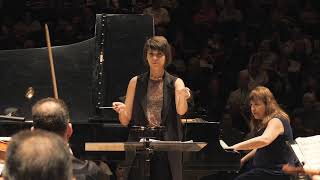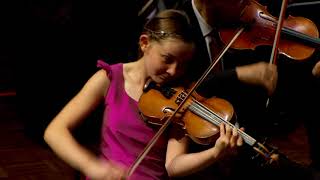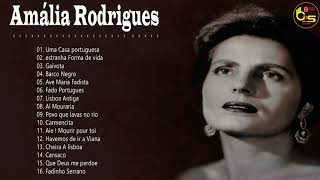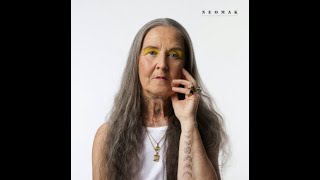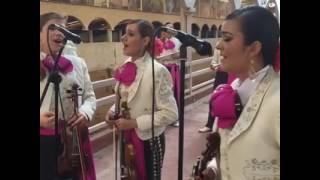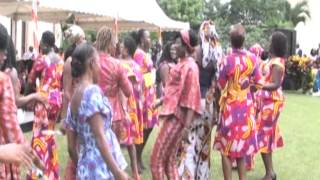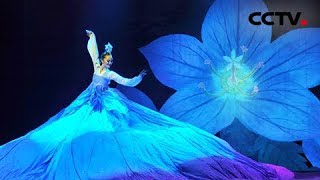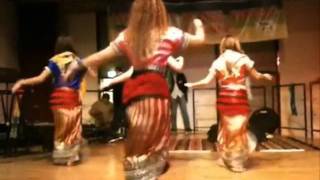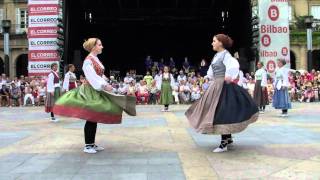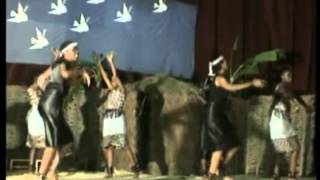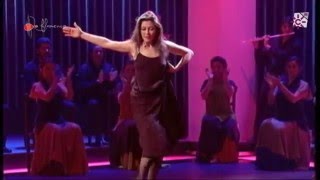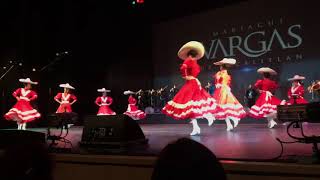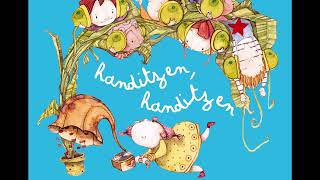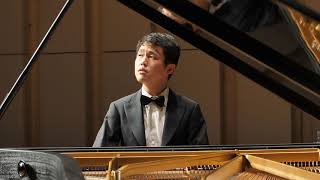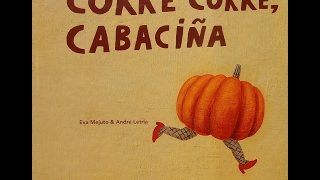March 7, 1875, Maurice Ravel was born
March 8, International Women's Day
International Women's Day (previously called International Day of Working Women) commemorates every March 8 the struggle of women for their participation in society and their full development as a person, on an equal footing with men. The numeronym "8-M" is also used to refer to this commemoration in reference to the day and month in which it is commemorated.
Although throughout the year we try to give women equal treatment, which is often not easy for us (especially when it comes to conductors since only 10% of conductors in the world are women) in the celebration of the International Women's Day we have tried to give it preferential and almost exclusive treatment as a denunciation of the apartheid that has suffered throughout the centuries in the world of music and that unfortunately continues to suffer in many places and human activities.
Recommended music videos for initiation to classical music
Maurice Ravel (1875-1937) born in Ziburu (Ciboure, Basque Country in France) inherited from his father, an engineer of Swiss origin, his meticulousness at work and from his mother, born in Mendata (Bizkaia), his passion for music with the folk songs with which he adorned his childhood. A few months after he was born, the family moved to Paris , where he began his piano studies at the age of six. At the age of 14, he entered the Paris Conservatoire where he had the opportunity to study with Gabriel Fauré . His early works already show us a strong personality and an independent spirit. In 1901 he premiered his Jeux d'eau , a piano work with which he began to make his way in the musical circles of Paris where the influence of Ravel on Debussy or vice versa was discussed.
Meanwhile, his fame was already established, to the point that Sergei Diagilev , creator of the Ballets Russes , which in those years were in full swing, commissioned the ballet Daphnis et Chloé , Ravel 's longest work, whose premiere was unequally received, which caused a drop in morale in the composer. Being in the middle of World War II , he found out about the death of his mother, a fact that had a profound impact on him; After these sad events, Ravel continued to work and premiere different works, among which was another masterpiece, the symphonic poem La Valse . In 1921 he lived until his death in a mansion 30 kilometers from Paris , where eminent musicians and intellectuals met, despite the reserved nature of the composer.
In 1928 he toured Canada and the USA where he lived with the jazz that he liked so much and contacted Gershwin . On his return to Paris he composed the work that would give him the most fame, the Bolero . In 1932 he wrote his two piano concertos: Concerto for the left hand and Concerto in G. From 1933 he began to have difficulties with psychomotricity; difficulties that were getting bigger until he died at the age of 62. His legacy consists of works for piano for 2 and 4 hands, chamber music, orchestral, concertantes, songs for voice and accompaniment, an opera and a lyrical fantasy for soloists, choir and orchestra. He reduced his own orchestral works to piano, as well as orchestrated his own and others' works written for piano, among which Musorgsky 's Pictures at an Exhibition stand out.
With this video we offer a select anthology of his most outstanding works: 1 (00´00´´) BOLÉRO .-. 2 (14´40´´) PAVANE POUR UNE INFANTE DÉFUNTE .-. 3 (20´24´´) CONCERTO POUR PIANO IN G MAJOR: I Mov Allegramente .-. II Mov (28´25) Adagio assai .-. III Mov (38´05´´) Presto .-. 4 (41´47´´) RHAPSODIE SPANISH: I Prélude à la nuit. Très moderé .-. II (45'56'') Malaga. Assez vif.-. III (48'12'') Habanera. Assez lent et d'un rythme las .-. IV (50´50´´) Fair. Assez anime .-. 5 (57´05´´) CHANSONS MADECASSES: I Nahandove .-. II (1h 2´07´´) Aoua .-. III (1h 6´12´´) Il est doux .-. 5 (1h 10´03´´) CINQ MÉLODIES POPULAIRES GRECQUES: I Chanson de la mariée .-. II (1h 11´40´´) Là-bas, vers l'église .-. III (1h 13´20´´) Quel galant m'est comparable .-. IV (1h 14´26´´) Chanson des cueilleuses de lentisques .-. V (1h 17´22´´) Tout gai! .-. 6 (1h 18´11´´) DON QUICHOTTE À DULCINÉE: I Chanson romanesque .-. II (1h 20´04´´) Chanson epic .-. III (1h 23´10´´) Chanson à boire .-. 7 (1h 24´52´´) LA VALSE .-. 8 (1H 35´53´´) TZIGANE, RHAPSODIE DE CONCERT .-. 9 (1h 44´55´´) CHANTS POPULARES: no. 2, Chanson française. "Jeanneton où irons-nous garder" .-. 10 (1h 47´32´´) 2 HEBREW SONGS, no. 1, Kaddisch .-. 11 (1h 52´31´´) GASPARD DE LA NUIT .-. 12 (1h 59´4´´) TZIGANE, RHAPSODIE DE CONCERT .-. 13 (2h 8´15´´) QUATUOR À CORDES IN F MAJOR: I Allegro moderato .-. II (2h 15´44´´) Assez vif, très rythmé .-. III (2h 21´50´´) Three slow .-. IV (2h 30´40´´) Vif et agité .-. 14 (2h 35´28´´) JEUX D'EAU .-. 15 (2h 40´01´´) MIROIRS, IV Dawn of the funny .-. 16 (2h 46´02´´) MA MÈRE L'OYE, III Laideronnette, Impératrice des pagodes .-. 17 (2h 49´11´´) TOMBEAU DE COUPERIN, III Forlane .-. IV (2h 54´01´´) Rigaudon .-. 18 (2h 57´08´´) SONATINE, I Modéré .-. II (3 h 0´51´´) Mouvement de menuet .-. III (3h 4´01´´) Anime .-. 19 (3h 7´35´´) NOBLE AND SENTIMENTAL WALTZES, I Modéré, très franc .-. 20 (3h 8´48´´) CONCERTO POUR LA MAIN GAUCHE.
Bianca Maria Meda (1665-1700) was an Italian Benedictine nun and composer of music. No mention of his life has yet been found; only his name, which appears for the first time in 1677, in the documents of the Benedictine convent of San Martino del Leano in Pavia . She would have been 16 years old, the age at which, according to the custom of the time, young women entered convents. When he was about thirty, according to the above assumptions (1691), he published his only known compositions: " Mottetti a 1, 2, 3, e 4 voci ". With this collection, Meda became one of the few nun-composers in Italy to see her work printed in the 17th century ; only Isabella Leonarda , an Ursuline nun from Novara , followed her.
Cappella Artemisia is an Italian all-female vocal group specializing in the convent music of 17th-century Italy . The group was founded by the American, but Italian-based singer and musicologist, Candace Smith . Smith is also a co-publisher, with her husband, cornetist Bruce Dickey , of editions of this music through Artemisia Editions . The group's main repertoire centers on the composer nuns themselves; although the ensemble also performs works by male composers - some monks, some secular - who dedicated works to the convents.
Fanny Mendelssohn (1805-1847) was an early Romantic (1810-1910) composer and pianist. His compositions include a piano trio, a piano quartet, an orchestral overture, four cantatas, more than 125 piano pieces, and more than 250 lieder, most of which were published posthumously. Although she was praised for her piano playing prowess, she rarely gave concerts in public. Fanny grew up in Berlin where, together with her younger brother, Felix Mendelssohn , she received a thorough musical education from teachers such as Ludwig Berger and Carl Friedrich Zelter . Due to the social status of women in her time, several of her works were published under her brother's name in her opus 8 and 9 collections.
The nocturne is a piece of vocal or instrumental music, with a sweet melody and free structure. The denomination "nocturne" was given, in the first instance in the 18th century , to a piece played at times, generally at night parties and then left aside. In its most common form (that is, as a one-movement piece usually written for piano solo), the genre was cultivated mainly in the 19th century . The first nocturnes written under that name were composed by John Field , seen as the father of the romantic nocturne , which has a characteristic cantabile melody with an arpeggiated accompaniment. However, the most famous exponent of this music was Frédéric Chopin , who wrote 21 works in this genre.
Jure Robežnik (August 23, 1933 – October 7, 2022) was a Slovenian pianist and composer who focused his attention mostly on jazz and popular music . Despite not having a musical education, he was the author of more than one hundred and fifty pieces of music.
Neža Torkar (1990) is a Slovenian accordionist, who studied music and accordion in Slovenia and Germany, having offered numerous concerts throughout Europe as a soloist and as a member of chamber groups. He has won important European awards as accordion soloist. (5-3-23)
Today he is accompanied by the five-woman Slovenian vocal group Gallina ensemble.
Recommended classical music videos
Ma mère, l'oye (My mother, the goose) is a musical work by Maurice Ravel composed for piano four hands; he originally wrote it as a piano duet for children, having dedicated an earlier work, Sonatine , to his parents. It was transcribed for piano solo by Jacques Charlot , a friend of Ravel's , the same year it was published (1910). Both piano versions bear the subtitle Cinq pièces enfantines (Five Children's Pieces). In 1911, Ravel orchestrated the work; later that year he enlarged it to create a ballet, separating the initial five pieces with four new interludes and adding two opening movements, Prèlude and Danse du rouet et scène . The ballet premiered on January 29, 1912 at the Théâtre des Arts in Paris, remaining as follows:
Structure of the work. (0´09´´) PRELUDE (Prelude) .-. II (3´13´´) DANSE DU ROUET ET SCÈNE (Scene and Dance of the spinning wheel) .-. III (6´32´´) PAVANE DE LA BELLE AU BOIS DORMANT (Sleeping Beauty Pavane).-. IV (8´05´´) INTERLUDE (Interlude) .-. V (8´46´´) LES ENTRETIENS DE LA BELLE ET DE LA BÊTE (Talks about Beauty and the Beast) .-. VI (13´04´´) INTERLUDE (Interlude) .-. VII (13´49´´ ) PETIT POUCET (Thumbelina) .-. VIII (16´50´´) INTERLUDE (Interlude) .-. IX (18´01´´) LAIDERONNETTE, IMPÉRATRICE DES PAGODES (Laideronnette, empress of the pagodas) .-. X (21´48´´) INTERLUDE (Interlude) .-. XI (23:03´´) LE JARDIN FÉERIQUE (The fairy garden).
Today it is offered to us by the Vienna Symphony under the baton of the young and brilliant maestro Marie Jacquot .
Marie Jacquot stands out among the many young conducting talents in her interest in exploring a wide repertoire, her constant rehearsal work and her inspiring performances both on the podium and in the pit. In the 2021/22 season, the Royal Danish Theater Designated Chief Conductor made her acclaimed debut with the Gewandhausorchester Leipzig, the Dresden Philharmonic, at the Deutsche Oper Berlin, the Semperoper Dresden, the Stuttgart State Opera and the Deutsches Sinfonieorchester Berlin . She is a frequent guest of the Vienna Symphony Orchestra , among others, with whom she performs at the Bregenz Festival and the Vienna Musikverein in the 2022/23 season, while she will continue to conduct other major European orchestras.
Francesca Caccini (1587-after 1641) was an Italian composer, singer, lutenist, music teacher, and poet of the early Baroque period (1600-1750). He was born in Florence ; his father, Giulio Caccini , was a famous and popular composer and a pioneer in monodic music; From a very young age, his father taught him music and composition. His mother, Lucia Gagnolanti , was also a singer; her younger sister, Settimia , also became a composer, and she had an older brother, Pompeo Caccini , who was a singer and painter. He received a humanistic education: Latin, some Greek, as well as modern language and literature, and mathematics. She was one of the few seventeenth-century female composers whose works were published.
La liberazione di Ruggiero dall'isola d'Alcina is a comic opera in four scenes by Francesca Caccini , which premiered on February 3, 1625 at the Villa di Poggio Imperiale in Florence , with a libretto by Ferdinando Saracinelli , based on the play by Ludovico Ariosto Orlando Furioso . It is the first opera written by a woman, and was long considered the first Italian opera to be performed outside of Italy. It is the only surviving opera by Francesca . It is written in the modern style ; that is, in the style of Claudio Monteverdi , although the work possibly owes more to the work of Jacopo Peri . It uses the new recitative stile , as well as canzonettas in the style of the Concerto delle donne .
Today it is offered to us by the musicians of the "Antonio Vivaldi" Conservatory of Alessandria under the coordination of maestro Marco Berrini
Clara Wieck (1819-1896), better known as Clara Schumann , was a German pianist, composer, and piano teacher. As a pianist, she was a benchmark in the 19th century and a key figure in disseminating the works of her husband Robert Schumann . He was born and raised in Leipzig in a family of musicians, where his mother was a famous singer and his father, a professional pianist and teacher of Clara , a child prodigy. He began to make himself known in Europe at the age of eleven; she married Robert Schumann and the couple had eight children. Together, they encouraged Johannes Brahms and maintained a close relationship with him. As a composer, she has left us a legacy of solo piano pieces, a Piano Concerto, which we offer today, chamber music, orchestral works, 30 lieder and choral music.
Piano Concerto in A minor , op. 7. In January 1833, at the age of 13, Clara Wieck ( Clara Schumann after her marriage to Robert Schumann ) began composing a one-movement Konzertsatz that she orchestrated herself. In February 1834, her future husband Robert Schumann revised the orchestration, and the 14-year-old prodigy performed it in several concerts. She then expanded the work by adding two more movements, using the " Konzertsatz " as the third movement, and re-orchestrating the entire work herself, which she finished completing on September 1, 1835 (she was not yet 16 years old) and premiered it in November. from 1835 with herself as soloist accompanied by the Leipzig Gewandhaus Orchestra conducted by Felix Mendelssohn .
structure . I (0´02´´) ALLEGRO MAESTOSO .-. II (6´52´´) ROMANZE. ANDANTE NON TROPPO WITH GRAZIA (11´04´´ ) .-. III (11´08´´) FINALE: ALLEGRO NON TROPPO – ALLEGRO MOLTO.
Today's version is offered to us by the pianist Michal Tal accompanied by the Israel Camerata Jerusalem Oechstra conducted by the maestro Keren Kagarlitsky .
Soul Deutscher (2005) is an English composer, child prodigy, pianist and violinist. He was born in Basingstoke , UK, to music-loving parents; at the age of two he began to play the piano; the violin, to the three; at four he began to improvise on the piano and at five he began to write his compositions; at six he composed his first sonata ; at seven, his first small opera , The Sweeper of Dreams , at nine a concerto for violin and orchestra , at ten a full-length opera, Cinderella , and at twelve he premiered his first piano concerto with the same composer at piano . All this while receiving private instrumental instruction on piano and violin from two teachers at the Yehudi Menuhin School in Surrey , England.
The Concerto is a musical form written for one or more solo instruments accompanied by an instrumental ensemble. It was Vivaldi who established the fundamental bases of its structure with three movements ( I fast-II slow-III fast ) and presented as a dialogue between the soloists and the instrumental ensemble. Starting from classicism, especially from the bases created by CPE Bach , the first movement is built following the patterns of the sonata form (exposure, development and re-exposition) , while the second and third movements adopt free and punctual forms. Frequently, at the end of the first and/or third movement, the soloists have a cadence without orchestral accompaniment with which they can show off their virtuosity.
The version that we present today of the Concerto for violin and orchestra in G minor by Alma Deutscher , was performed at the Carintischer Sommer Festival with Alma as a soloist (when she was only 12 years old) accompanied by the Vienna Chamber Orchestra conducted by the Japanese maestro Joji Hattori . The concerto is structured in three movements: I (0´22´´) ALLEGRO MAESTOSO ( cadenza 12´24´´) .-. II (15´39´´) ROMANCE .-. III (24´35´´) ALLEGRO SCHERZANDO ( cadenza 32´14´´).
Recommended music videos for all tastes
Recommended peculiar videos
Recommended music videos for children
Various Wikipedia articles have been used to write these texts.
The texts of Videomusicalis are written in Basque, Spanish and English.





